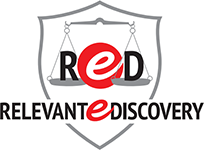Today 99% percent of data is in electronic format. A great majority of these electronic documents are never even printed, and hence potentially relevant evidence remains undiscovered. As standard storage in electronic devices continues to increase it is not uncommon for a personal laptop or a computer to contain 2-3 million pages of data.
While in theory electronic discovery documents are very similar to traditional paper discovery on its face. The similarity ends when discovery of each type are presented and the attorney sees the significant differences in the two media.
First, there are attributes only available inside electronic documents that are absent in their counterpart hardcopy documents. This might not be evident at first when viewing the electronic document, but when the same document is examined with specific e-Discovery forensic tools, the electronic document reveals attributes not seen in hardcopy documents. Information about an electronic document is typically hidden inside the file or in a database that is linked to the file. This information known as metadata, and contains such information as date of creation, creator of the file, and all dates associated when the file was read, opened, modified, or even printed. This metadata can be invaluable when authenticating files and establishing an accurate timeline.
Second, there is more detailed information in electronic discovery documents. For example, a paper document such as a ledger commonly contains information that is recorded in the form of a summary. Alternatively, a spreadsheet is analogous to the same ledger but in an electronic form. The spreadsheet may contain additional information absent from the ledger such as formulas, charts, and even complex databases. The ability to view the computations used in the electronic file provides the discoverer a deeper look in the investigation.
Third, electronic discovery documents are more dynamic and harder to destroy than hardcopy. Utilizing specific diagnostic software to search electronic documents is more efficient, reliable, and a massive time saver. An attorney can create a list of search terms and quickly input these into a 10,000, or even 100,000 electronic documents, and find whether the information he or she was looking for is there. Traditionally reviewing that many hardcopy documents would require 1000’s of hours and would likely be cost prohibitive. Paper documents can be destroyed with certainty by shredding, while dragging a file into the trash bin on a computer eliminates only the viewable copy. The deleted electronic file is not removed from the drive and can be restored with forensic software.
Finally, the structure of electronic discovery documents reveal clues of additional evidence that hardcopy just can’t match. In certain instances electronic documents may contain subdocuments that may not be located on the same computer. Exchange of electronic documents can occur through email, web access, or other transfer protocols. In this scenario, copies may exist in multiple systems even if the original has been deleted.
